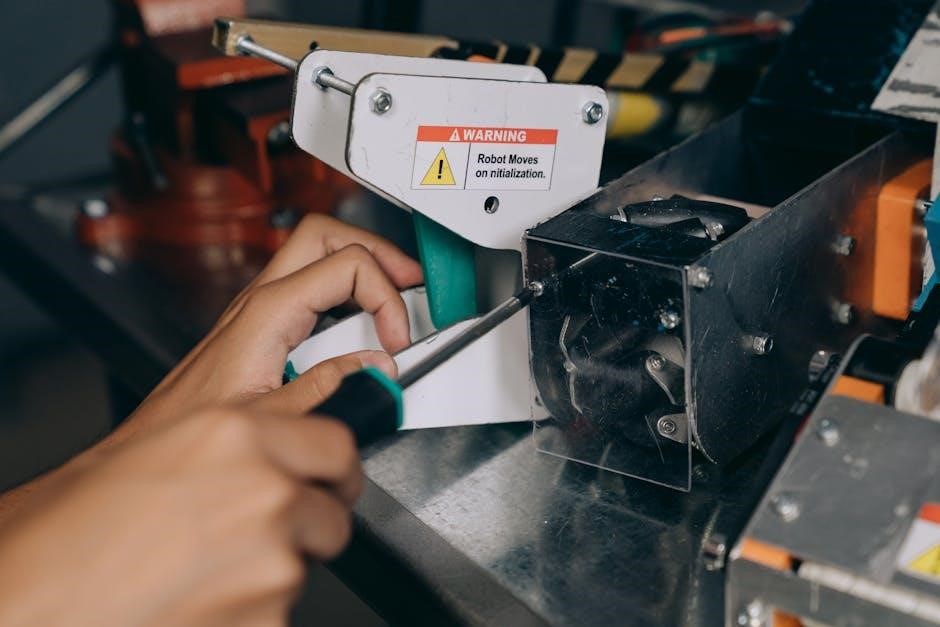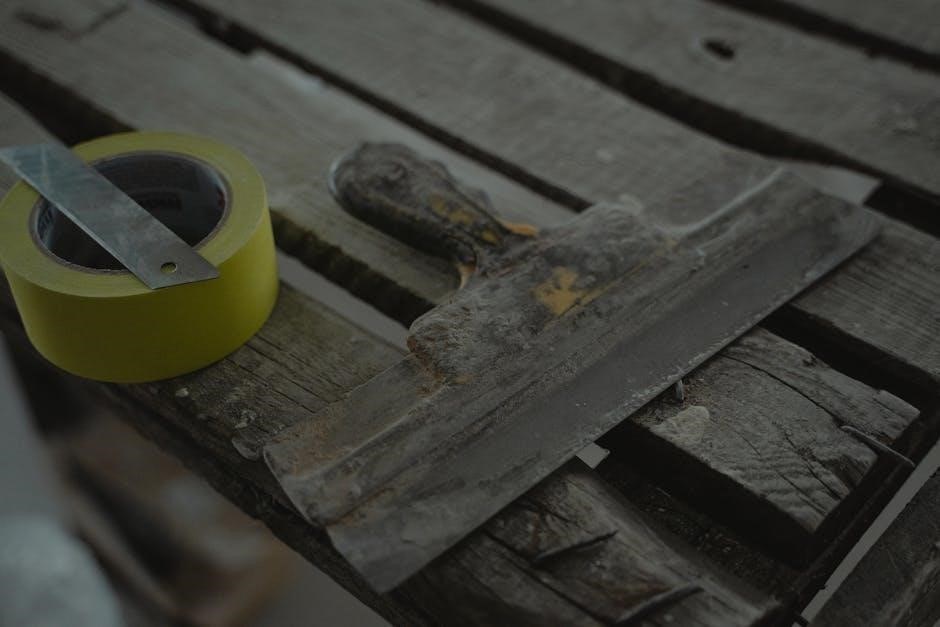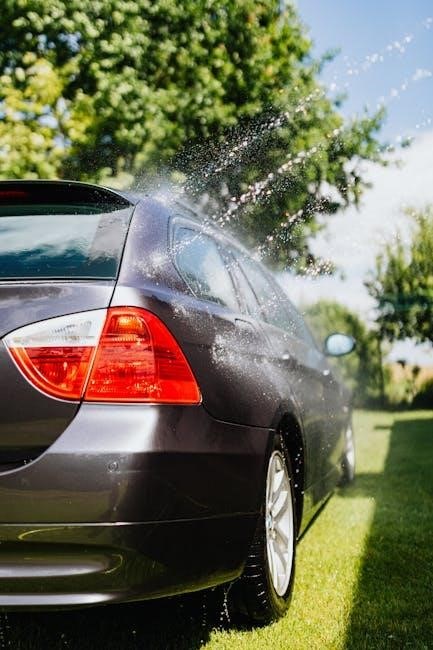Cessna 172 Skyhawk Maintenance Manual: A Comprehensive Guide
Welcome to your essential resource for maintaining your Cessna 172 Skyhawk! This guide provides a structured overview, ensuring safe and reliable operation․ Proper maintenance enhances flight safety, preserves value, and builds pilot confidence․ Let’s embark on mastering your Cessna 172’s upkeep!
The Cessna 172 Skyhawk is a widely celebrated aircraft, known for its reliability and ease of handling, making it a favorite among pilots and flight schools․ To ensure the continued airworthiness and safety of this aircraft, adherence to the maintenance manual is paramount․
This manual serves as a comprehensive guide for aircraft maintenance engineers and owners, providing detailed instructions on inspection, troubleshooting, repair, and component replacement․ It encompasses all the necessary information for maintaining the aircraft’s systems, from the engine to the avionics․
This manual typically includes sections on scheduled maintenance tasks, unscheduled maintenance procedures, and annual inspection requirements․ It also covers preventive maintenance tasks that owners can perform․ Furthermore, the manual emphasizes the importance of using approved parts and following Cessna’s recommended inspection intervals and replacement time limits․

By diligently following the guidelines outlined in the Cessna 172 Maintenance Manual, aircraft owners and maintenance personnel can ensure the safe and reliable operation of their aircraft, preserving its value and extending its lifespan․
Regularly consulting and adhering to the maintenance manual is key to preventing potential issues and maintaining the Skyhawk in optimal condition․
Importance of Proper Maintenance for Flight Safety
Proper maintenance of a Cessna 172 Skyhawk is not merely a suggestion, but a critical imperative directly linked to flight safety; Every component, from the engine to the flight controls, plays a vital role in ensuring a safe flight․ Neglecting maintenance can lead to seemingly minor issues escalating rapidly, posing significant risks at altitude․
Regular inspections and adherence to the maintenance schedule outlined in the Cessna 172 Maintenance Manual help identify potential problems early, allowing for timely repairs and preventing catastrophic failures․ Addressing small issues promptly prevents them from becoming major, costly, and potentially life-threatening emergencies․
Furthermore, proper maintenance ensures that the aircraft operates within its designed parameters, optimizing performance and handling characteristics․ This translates to enhanced pilot control and stability, particularly during critical phases of flight such as takeoff and landing․
By investing in regular maintenance, Cessna 172 owners and operators demonstrate a commitment to safety, protecting themselves, their passengers, and the public․ A well-maintained aircraft is a safer aircraft, providing peace of mind and confidence on every flight․
Coverage and Format of the Maintenance Manual
The Cessna 172 Skyhawk Maintenance Manual is a comprehensive document designed to provide detailed instructions for the proper upkeep and repair of the aircraft․ It covers a wide range of topics, including airframe maintenance, engine servicing, component overhaul, and troubleshooting procedures․ The manual typically includes detailed diagrams, illustrations, and step-by-step instructions to guide maintenance personnel through various tasks․
The format of the manual is typically organized into sections based on aircraft systems, such as the engine, landing gear, flight controls, and electrical system․ Each section provides specific information related to inspection, maintenance, and repair procedures for that particular system․ The manual also includes information on required tools, equipment, and materials needed to perform maintenance tasks․
Temporary revisions, service bulletins, and airworthiness directives are also integrated or referenced within the manual to ensure that maintenance personnel are aware of the latest updates and requirements․ Understanding the coverage and format of the maintenance manual is crucial for effective and safe aircraft maintenance․ It enables technicians to quickly locate the necessary information and perform maintenance tasks in accordance with the manufacturer’s recommendations․
The manual’s comprehensiveness ensures all aspects of aircraft maintenance are addressed, promoting safety and reliability․
Using the Maintenance Manual Effectively

To effectively use the Cessna 172 Skyhawk Maintenance Manual, start by familiarizing yourself with its structure․ Understand how it’s organized by system – engine, airframe, avionics – allowing quick access to relevant procedures․ Before any maintenance task, thoroughly read the corresponding section․ Pay close attention to safety precautions, required tools, and specific instructions․
Always verify the manual’s revision status to ensure you’re using the most current information․ Service bulletins and airworthiness directives often update maintenance procedures, so integrate them into your work․ Use the manual’s diagrams and illustrations for visual guidance, especially when dealing with complex assemblies․ When troubleshooting, follow the diagnostic procedures systematically to pinpoint the problem accurately․
Record all maintenance performed, referencing the specific manual section and revision date․ This creates a detailed maintenance history, essential for tracking recurring issues and ensuring compliance․ If uncertain about a procedure, consult with experienced mechanics or Cessna’s technical support․ Effective manual use ensures safe, compliant, and well-documented maintenance, prolonging your Skyhawk’s lifespan and reliability․ Remember, precision and adherence to instructions are paramount․
Scheduled Maintenance Procedures
Scheduled maintenance for your Cessna 172 is crucial for ensuring its airworthiness and longevity․ These procedures are outlined in the maintenance manual and involve routine checks and replacements performed at specific intervals, typically based on flight hours or calendar time․ Begin with daily pre-flight inspections, verifying fluid levels, control surface movement, and overall condition․ Weekly checks should include a more detailed examination, looking for leaks, wear, and any signs of damage․
Monthly maintenance may involve lubricating control cables, checking tire pressure, and inspecting the engine for proper operation․ Quarterly inspections go deeper, assessing brake wear, filter conditions, and performing more thorough engine checks․ Annual inspections are the most comprehensive, often requiring a certified mechanic to inspect the aircraft thoroughly, including engine compression tests, control system evaluations, and structural assessments․ Adhering to these schedules helps catch minor issues before they escalate into major problems․
Remember to meticulously document all scheduled maintenance in the aircraft’s logbook․ Proper scheduling and execution of these procedures will not only keep your Cessna 172 safe and reliable but also maintain its resale value․ Always refer to the latest maintenance manual revisions for the most accurate and up-to-date requirements․
Unscheduled Maintenance and Troubleshooting
Unscheduled maintenance addresses unforeseen issues that arise between scheduled checks․ Effective troubleshooting is key to resolving these problems quickly and safely․ When encountering an anomaly, document the symptoms thoroughly, noting when and how the issue occurs․ Consult the Cessna 172 maintenance manual for troubleshooting guides specific to the affected system․ Start with simple checks, such as verifying connections, inspecting wiring, and checking fluid levels․
If the problem persists, use diagnostic tools like multimeters and pressure gauges to gather more data․ Consult with experienced mechanics or A&P professionals for their insights and guidance․ Remember that some repairs require certified personnel due to regulatory requirements and the complexity of the systems; When replacing parts, always use Cessna-approved components to maintain the aircraft’s integrity and airworthiness․ After completing any unscheduled maintenance, perform a thorough inspection and test flight to ensure the issue is resolved and no new problems have emerged․

Maintaining detailed records of all unscheduled maintenance, including the problem, diagnosis, and repair steps, is essential․ This information can help identify recurring issues and improve future troubleshooting efforts․ Proactive troubleshooting and prompt attention to unscheduled maintenance ensure the continued safety and reliability of your Cessna 172․
Annual Inspection Requirements and Cost Drivers
The annual inspection is a comprehensive examination mandated by aviation authorities to ensure continued airworthiness of the Cessna 172․ This inspection must be performed by a certified Airframe and Powerplant (A&P) mechanic with an Inspection Authorization (IA)․ The scope of the inspection is detailed in 14 CFR Part 43, Appendix D, and covers all major aircraft systems, including the engine, airframe, control surfaces, landing gear, and avionics․
Cost drivers for the annual inspection can vary significantly based on the aircraft’s age, condition, and location․ Labor costs constitute a substantial portion, influenced by the mechanic’s hourly rate and the time required to complete the inspection․ Parts replacement is another major factor, as worn or defective components must be replaced to meet airworthiness standards․ Common items replaced during annual inspections include tires, brakes, hoses, and filters․
Unexpected repairs discovered during the inspection can also increase costs․ Corrosion, cracks, and other structural issues may require extensive repairs․ To minimize costs, maintain thorough maintenance records and address minor issues promptly․ Obtain quotes from multiple mechanics and discuss the scope of the inspection beforehand․ While cost is a concern, prioritize quality and safety to ensure the continued airworthiness of your Cessna 172․
Preventive Maintenance Tasks for Cessna 172 Owners
Cessna 172 owners can perform certain preventive maintenance tasks outlined in 14 CFR Part 43, Appendix A, without holding an A&P license․ These tasks are designed to keep the aircraft in good condition and catch minor issues before they escalate․ However, it’s crucial to understand the limitations and perform these tasks with caution, adhering strictly to the manufacturer’s instructions․
Common preventive maintenance tasks include replacing spark plugs, changing oil and filters, lubricating control cables, and servicing landing gear struts․ Owners can also perform simple cosmetic repairs, such as touching up paint and replacing interior components․ Careful record-keeping is essential; document all maintenance performed in the aircraft’s logbook, including the date, description of work, and your signature․
While these tasks can save money and time, it’s important to avoid exceeding your capabilities․ Complex repairs or modifications should always be entrusted to qualified A&P mechanics․ When in doubt, consult with a professional․ Regularly performing these preventive maintenance tasks can contribute to the longevity and reliability of your Cessna 172, ensuring safer and more enjoyable flying experiences․ Always prioritize safety and consult the maintenance manual․
Common Maintenance Errors to Avoid
Even experienced Cessna 172 owners and mechanics can fall prey to common maintenance errors that compromise safety and increase costs․ One frequent mistake is neglecting to consult the maintenance manual, leading to incorrect procedures and potential damage․ Another is using non-approved parts, which may not meet the required standards and can void warranties․
Improper torqueing of fasteners is a significant concern, as under-tightening can cause parts to loosen, while over-tightening can damage threads․ Failing to properly lubricate moving parts can lead to premature wear and system failures․ Rushing through inspections and neglecting thorough checks can result in overlooking critical issues․
Another error is neglecting to properly document maintenance performed, which can create confusion and liability issues․ Ignoring service bulletins and airworthiness directives is a serious oversight, as these contain essential safety information․ Lastly, attempting repairs beyond one’s skill level can lead to further complications and potentially dangerous situations․ Always prioritize safety and seek qualified assistance when needed․ Avoid these errors to ensure the continued airworthiness of your Cessna 172․
Maintenance of Engine
The engine is the heart of your Cessna 172, and its proper maintenance is paramount for safe and reliable flight․ Regular oil changes are crucial, typically every 25 to 50 hours, depending on your engine’s configuration and operating conditions․ Inspect the oil for any signs of metal shavings, which could indicate internal wear․
Check the engine’s air filter regularly and replace it as needed to ensure proper airflow․ Inspect the spark plugs for fouling or damage, and clean or replace them as required․ The ignition system should be inspected periodically, including the magnetos and wiring․
Pay close attention to the engine’s cooling system, ensuring that the cylinders are within acceptable temperature ranges․ Check the exhaust system for cracks or leaks, which can lead to carbon monoxide poisoning․ Regularly inspect the engine mounts for any signs of deterioration or damage․ Keep detailed records of all maintenance performed on the engine, including dates, hours, and any parts replaced․ Adhering to the manufacturer’s recommended maintenance schedule will prolong the life of your engine and ensure safe operation․
Maintenance of Landing Gear
Maintaining the landing gear of your Cessna 172 is crucial for safe takeoffs and landings․ Regularly inspect the tires for proper inflation, wear, and damage․ Check the brake system, including the brake pads, rotors, and hydraulic lines, for any leaks or wear․ Ensure the brake fluid level is correct and that the brakes are functioning properly․
Inspect the landing gear struts for proper extension and condition, looking for any signs of corrosion or damage; Lubricate the landing gear components according to the maintenance manual’s recommendations․ Check the wheel bearings for proper lubrication and free rotation․
Examine the landing gear retraction system, if applicable, ensuring that it operates smoothly and reliably․ Inspect the landing gear doors for proper alignment and closure․ Pay close attention to any unusual noises or vibrations during taxiing or landing, as these could indicate a problem with the landing gear․ Address any issues promptly to prevent further damage or potential accidents․ Maintaining the landing gear in good condition will ensure safe and reliable operation throughout the aircraft’s lifespan․
Inspection Intervals and Replacement Time Limits
Understanding inspection intervals and replacement time limits is paramount for maintaining your Cessna 172 Skyhawk․ Cessna provides specific schedules for inspecting various components to ensure airworthiness․ These intervals are based on flight hours, calendar time, or a combination of both․
Adhering to these schedules is not merely a suggestion but a requirement for safe operation and regulatory compliance․ The maintenance manual outlines these intervals, detailing what needs inspection and when․ For instance, certain components, like hoses, might have a calendar-based replacement schedule, regardless of flight hours․
Other parts, such as engine components, may have hourly inspection or overhaul requirements․ Ignoring these limits can lead to unexpected failures, compromising safety․ Furthermore, Cessna Service Bulletins often introduce or modify inspection and replacement criteria․ Consulting the maintenance manual and staying updated with service bulletins ensures all inspections occur within prescribed timeframes․ This proactive approach prevents costly repairs and maintains the aircraft’s reliability, keeping you safely in the sky․
Finding and Using Cessna Service Bulletins
Cessna Service Bulletins (SBs) are crucial updates providing essential information on maintenance, modifications, and safety enhancements for your Cessna 172․ These bulletins address potential issues, ensuring continued airworthiness․ Finding and effectively using SBs is vital for every Cessna 172 owner and maintenance technician․
Cessna distributes SBs through various channels, including their official website and aviation maintenance databases․ Regularly checking these sources is essential to stay informed․ Once you find a relevant SB, carefully review its content․ Understanding the bulletin’s applicability to your specific aircraft model and serial number is paramount․

The SB will outline the recommended actions, which may include inspections, repairs, or modifications․ Adhering to these instructions is critical for maintaining safety and regulatory compliance․ Document all actions taken in accordance with the SB in the aircraft’s maintenance records․ This ensures a clear history of compliance․ Staying proactive with SBs ensures your Cessna 172 remains up-to-date, safe, and airworthy, preventing potential issues before they arise․



